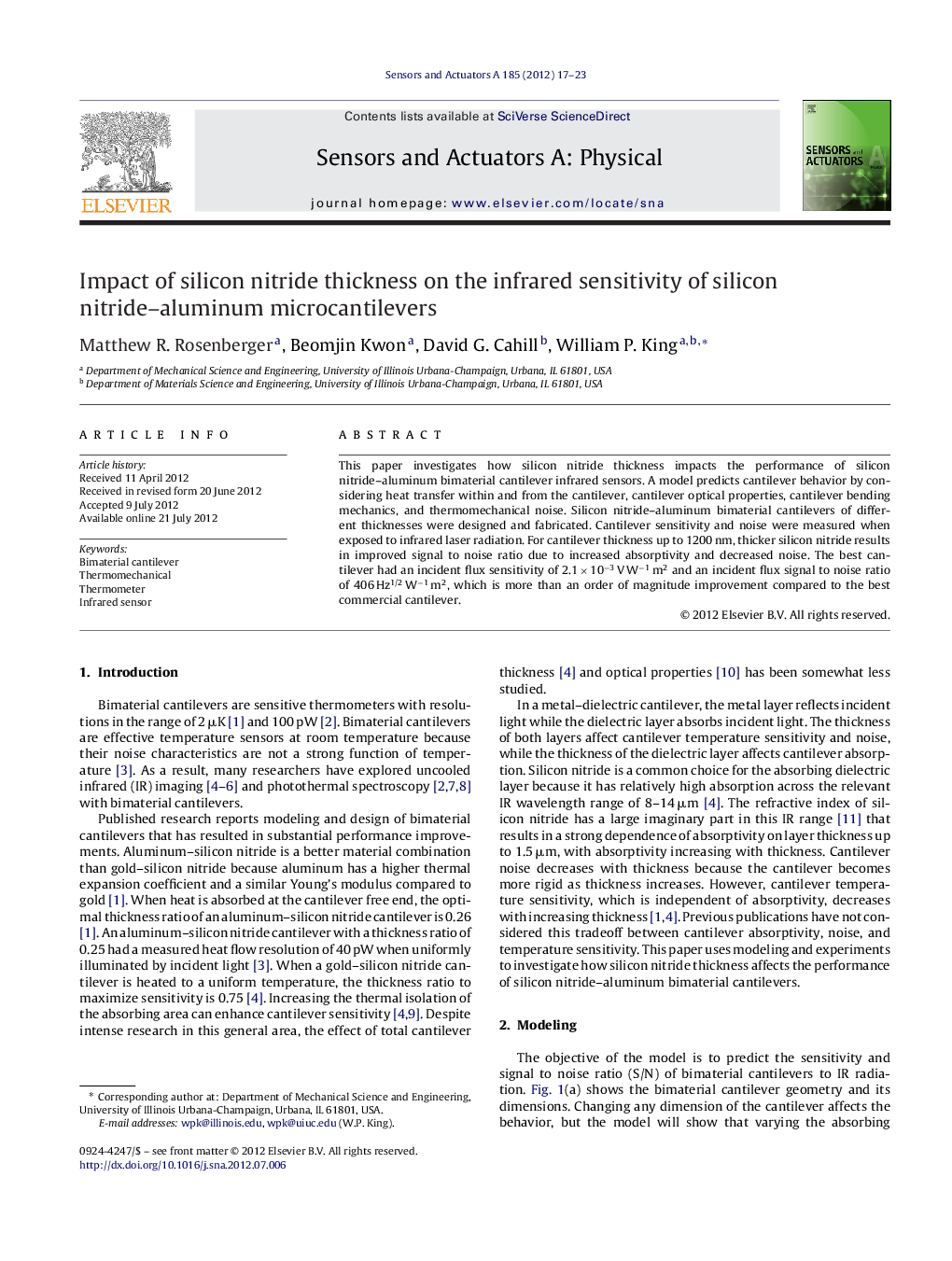| Article ID | Journal | Published Year | Pages | File Type |
|---|---|---|---|---|
| 736333 | Sensors and Actuators A: Physical | 2012 | 7 Pages |
This paper investigates how silicon nitride thickness impacts the performance of silicon nitride–aluminum bimaterial cantilever infrared sensors. A model predicts cantilever behavior by considering heat transfer within and from the cantilever, cantilever optical properties, cantilever bending mechanics, and thermomechanical noise. Silicon nitride–aluminum bimaterial cantilevers of different thicknesses were designed and fabricated. Cantilever sensitivity and noise were measured when exposed to infrared laser radiation. For cantilever thickness up to 1200 nm, thicker silicon nitride results in improved signal to noise ratio due to increased absorptivity and decreased noise. The best cantilever had an incident flux sensitivity of 2.1 × 10−3 V W−1 m2 and an incident flux signal to noise ratio of 406 Hz1/2 W−1 m2, which is more than an order of magnitude improvement compared to the best commercial cantilever.
► In bimaterial cantilever infrared sensors, silicon nitride thickness affects cantilever absorptivity, sensitivity, and noise. ► We model and measure bimaterial cantilever sensors of several thicknesses and geometries. ► Optimization of the silicon nitride thickness improves the cantilever performance by 10× compared to commercial microcantilevers.
